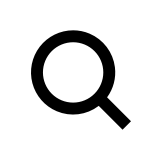De Stadscollectie Antwerpen is a lively tribute to the artists who give colour to the city of Antwerp. From emerging talent to established names, this collection highlights local creativity but also the global influence of Antwerp’s art scene. Welcome!
Marcel Broodthaers
Two pieces of coal wrapped in cotton wool, 1967
Mussels Eggs Chips Pots Coal
26 May – 26 June 1966
Marcel Broodthaers’s first exhibition at Wide White Space gallery took place from 26 May to 26 June 1966. The exhibition was characterised by two large-scale works: “Armoire à Charbon” [“Coal Cupboard”)] (1966) and “Grande Casserole de Moules” [“Large Saucepan of Mussels”] (1966). The latter work was the largest (65 cm tall) and also the last of his “Casseroles”. It stood on the floor, simply, without any pedestal, which looked very odd in those days. “Armoire à Charbon” was a black cupboard and if you opened it you saw a series of cardboard cases of Champagne bottles, which stared at the spectator like just as many ghosts. Another important object was “Étal de Moules” [“Mussel Stall”] (1966), a pyramid-like piling-up of mussel shells, such as could be seen at a market, with on the wooden framework 7 FRS K° (7 francs per kilo).
The Invitation
A few weeks before the opening of his exhibition Broodthaers came to Antwerp to design the invitation. As the gallery had sent out large posters for the two previous exhibitions it seemed obvious that it would also be a poster this time. But when Marcel got his hands on the poster-size sheet of paper, he began to fold it until it resulted in a small 20 cm by 13.5 cm book.
Broodthaers asked the printer to set the titles in “Anglaise” fount.
This led to the beautiful title “Moules, Œufs, Frites, Pots, Charbon” [“Mussels, Eggs, Chips, Pots, Coal”) in the elegant italic fount that he would go on using later.
On the cover of the book was all the information concerning date, address and opening.
Inside was a short biography followed by a sheet of paper with the words “Pot, moule, œuf, cœur” [“Pot, mussel, egg, heart”] repeated dozens of times. Then three poems, “Ma Rhétorique” [“My Rhetoric”], “Poème” [“Poem”] and “Théorème” [“Theorem”], accompanied by images of mussels, eggs, chips.
On the back was the logo of the gallery with the address, and the addendum “achter het museum” [“behind the museum”].
Anny De Decker 2019

